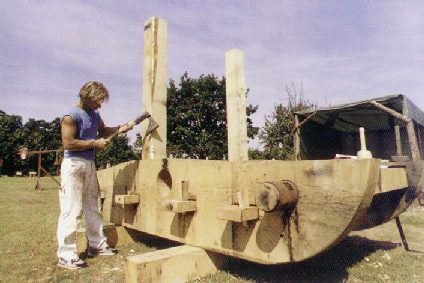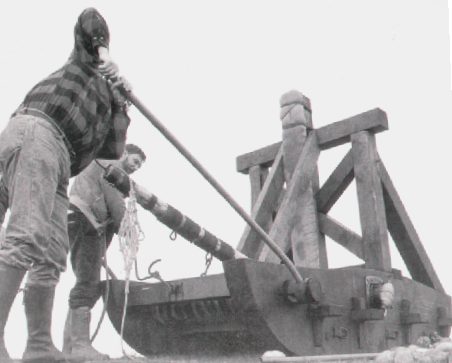Mangonel violence
The violent nature of
mangonels and onagers means that they occasionally break their arms.
There are other less obvious aspects too. Here's some additional
practical information about the mangonel from Peter Vemming of the
Medieval Centre:
"Another thing about the mangonel. First we made the padding that
caught the arm as a stuffed leather cushion, but when we fired the thing,
it got hit with such a force, that the nails holding the cushion flew
like projectiles in all directions. When you use leather the air pressure
gets so big, that it can tear out 2 inch nails. Instead you have to use
canvas, to get rid of the air when the throwing arm hits."
|




